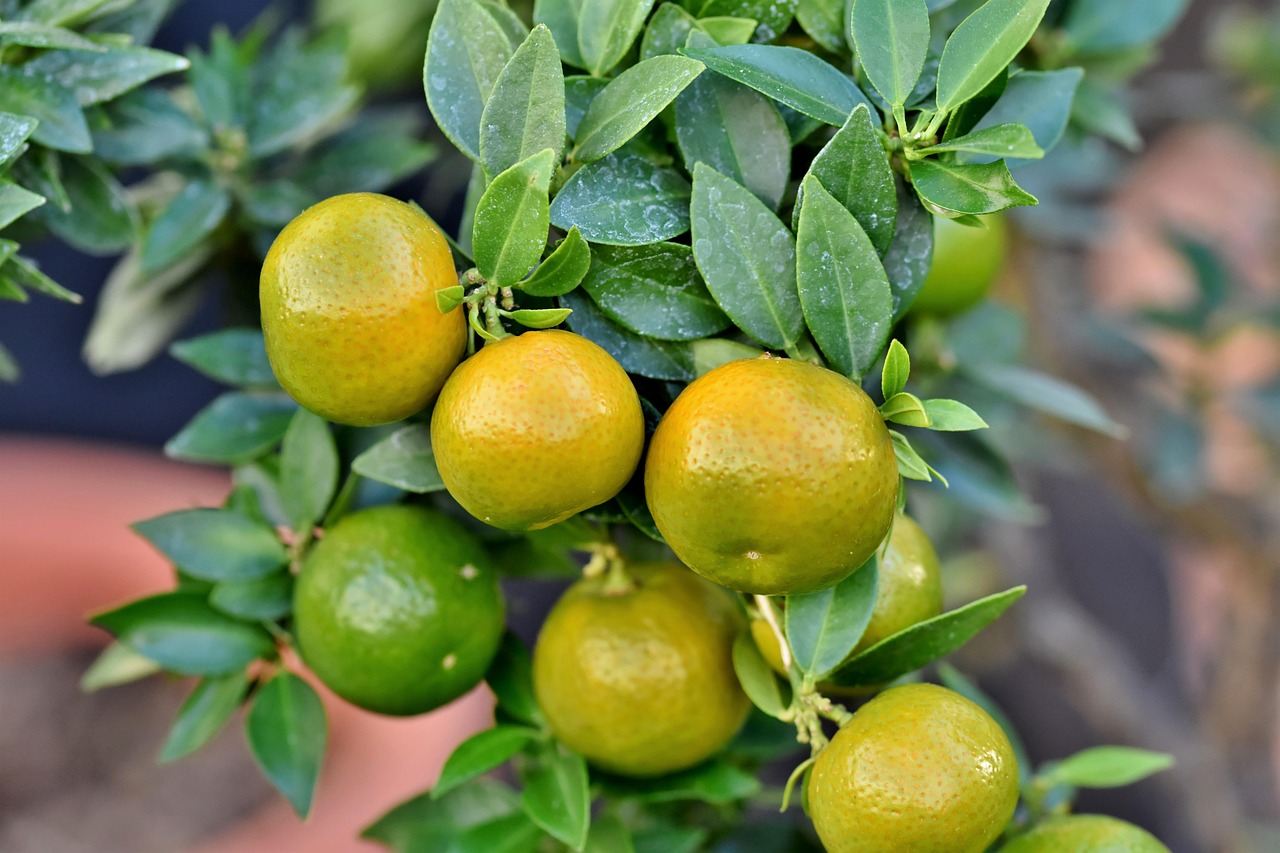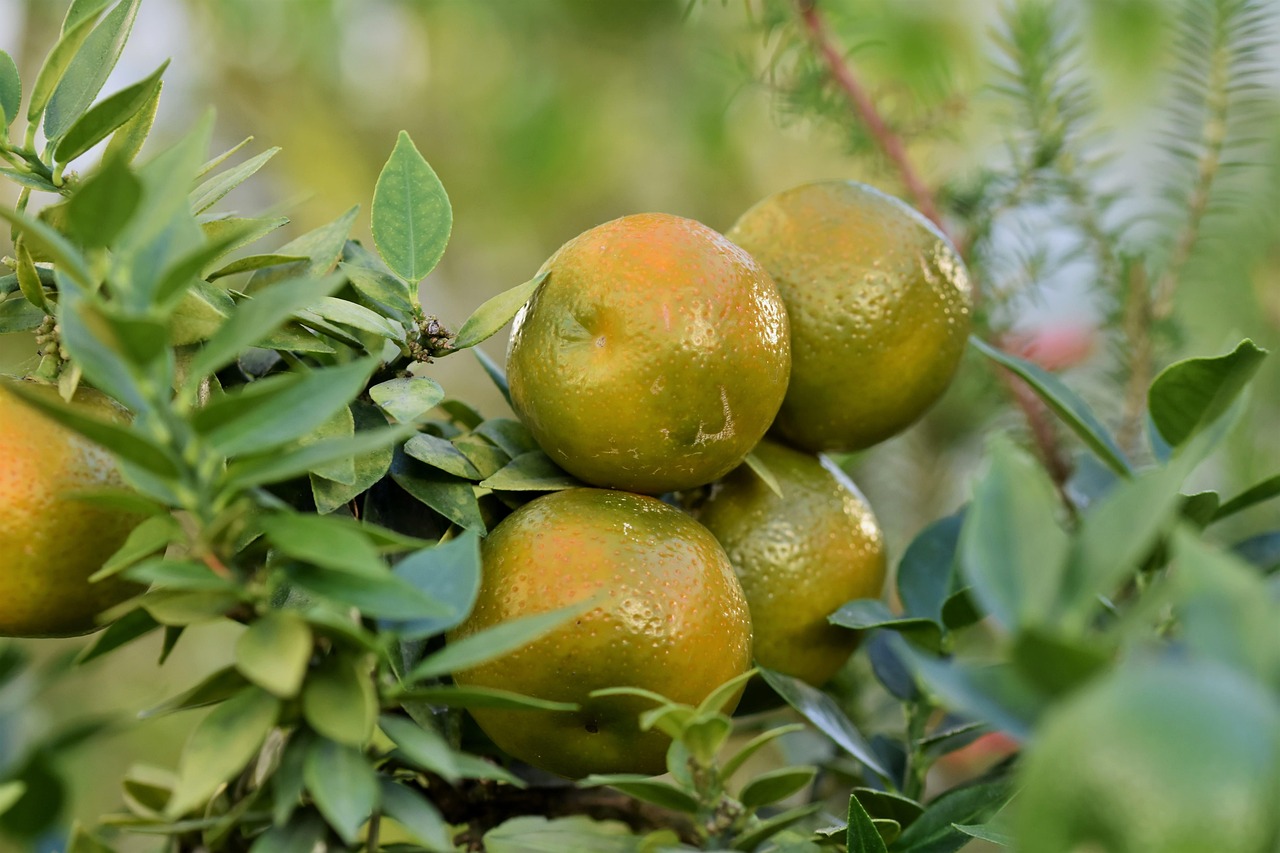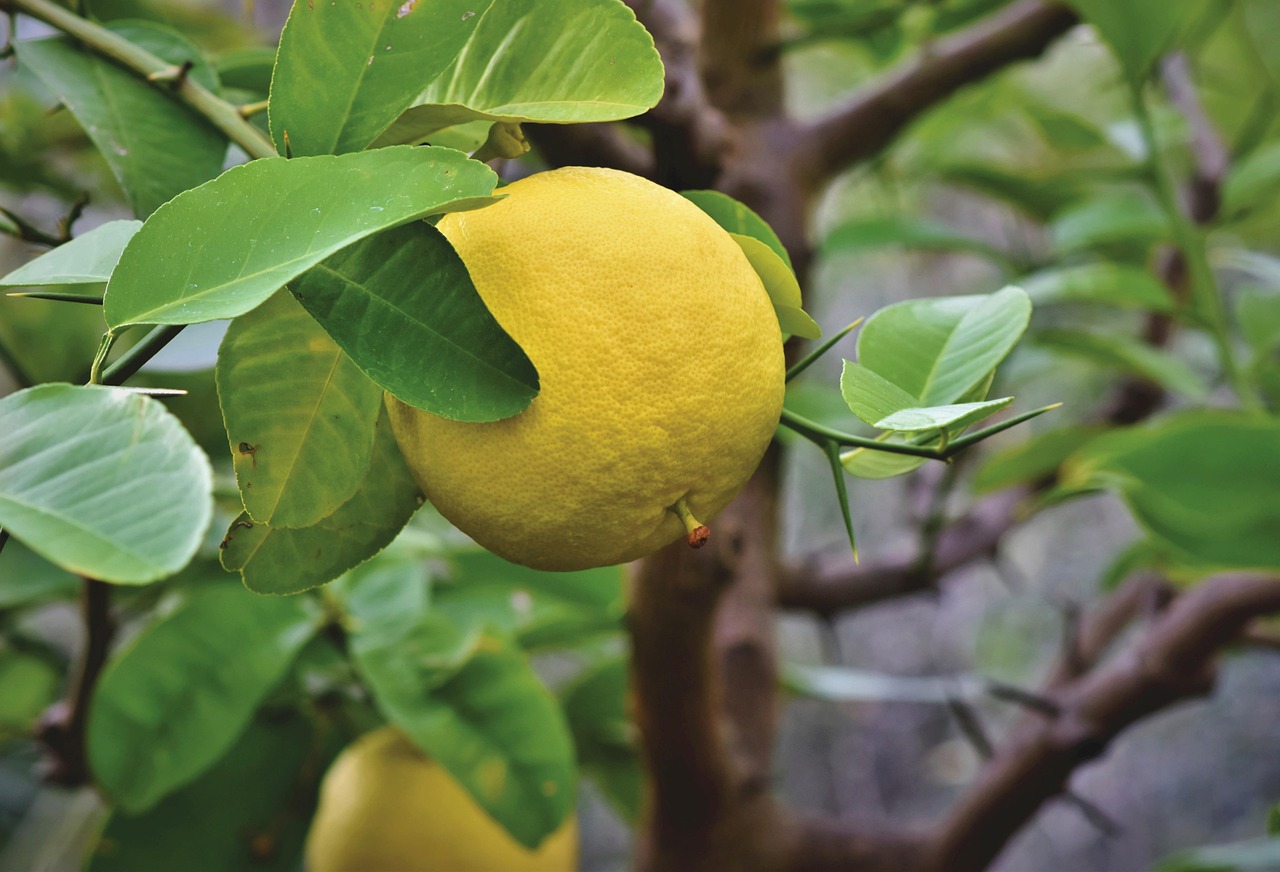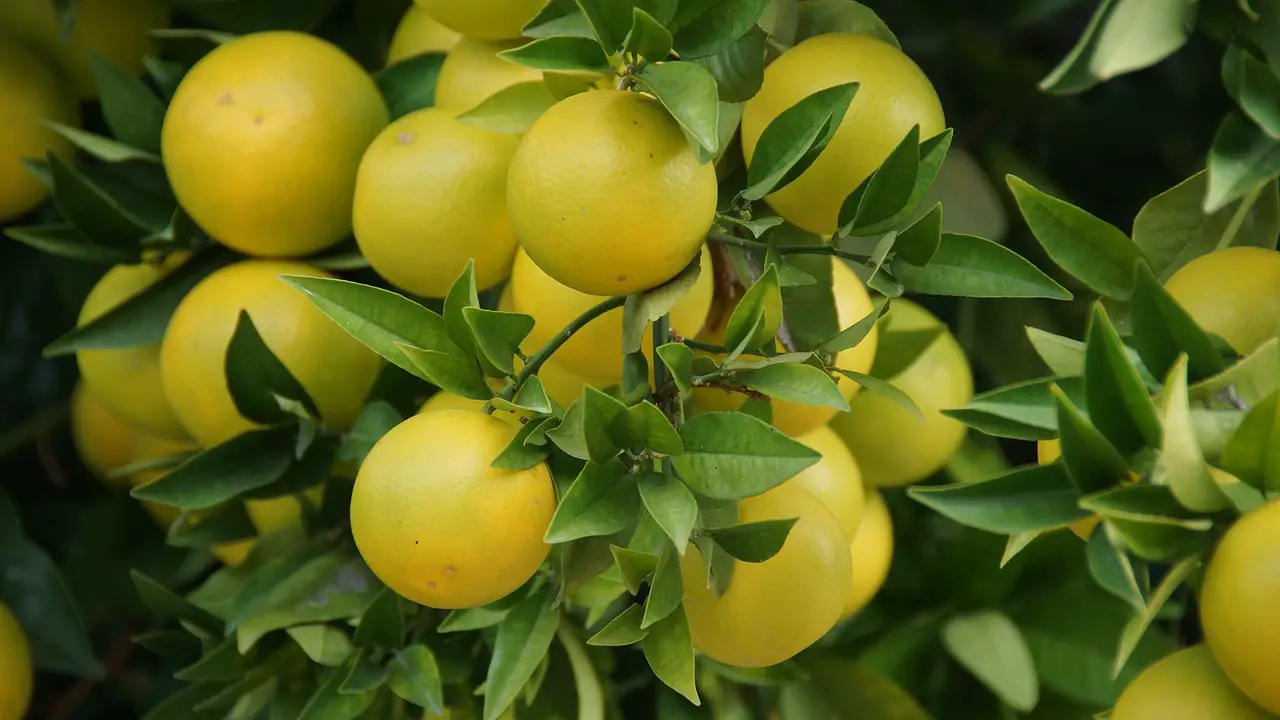Grapefruit trees typically grow at a rate of 1 to 3 feet per year under optimal conditions. Factors such as climate, soil quality, and care can influence this growth rate significantly, impacting the tree’s health and fruit production.
Grapefruit trees (Citrus × paradisi) are popular for their delicious, tangy fruit. They are a member of the citrus family and thrive in warm climates. Understanding their growth rate is crucial for gardeners and farmers seeking fruitful results. Knowing how fast these trees grow helps in planning for space, care, and maintenance to ensure a bountiful harvest.

Typically, grapefruit trees are planted for their long-term productivity. When well cared for, they can produce fruit for several decades. However, during the initial years, growth rates can vary widely based on environmental conditions and cultivation practices. This section explores the factors that affect grapefruit tree growth rates and provides guidance on how to achieve optimal growth.
Factors Affecting Growth Rate
Several factors can influence the growth rate of grapefruit trees. Understanding these factors can help growers create the best possible conditions for healthy tree development.
- Climate: Grapefruit trees flourish in subtropical to tropical climates. They require warm temperatures and plenty of sunlight. Cold temperatures can hinder growth and even damage the tree.
- Soil Quality: Well-draining soil enriched with organic matter promotes healthy root development. Soil pH should ideally be between 6.0 and 7.0 for optimal nutrient uptake.
- Watering: Adequate watering is essential, especially during dry periods. However, overwatering can lead to root rot, which negatively affects growth.
- Fertilization: Regular fertilization with a balanced fertilizer helps supply essential nutrients. Young trees may need more nitrogen to support their rapid growth phase.
- Pest and Disease Management: Protecting trees from pests and diseases is vital. Infestations can slow growth and reduce fruit yield significantly.
The following table highlights the average growth rates of grapefruit trees based on their age:

| Age of Tree (Years) | Average Growth Rate (Feet per Year) |
|---|---|
| 1 | 1-2 |
| 2 | 2-3 |
| 3 | 3-4 |
| 4+ | 1-3 |
As illustrated in the table, young grapefruit trees tend to grow faster initially. During their first few years, they establish their root systems and build strength for future growth. After reaching maturity, their growth rate may slow down but they continue to grow steadily with proper care.
The spacing between grapefruit trees is also important for their growth. Adequate spacing allows for air circulation and sunlight exposure, both of which contribute to healthy growth. Generally, it is recommended to plant grapefruit trees at least 15 to 20 feet apart. This spacing helps minimize competition for resources and supports optimal growth rates.
Additionally, pruning plays a role in maintaining a healthy growth rate. Regular pruning encourages strong branching and helps shape the tree for better sunlight penetration. It is advisable to remove any dead or diseased branches, which can sap energy from the tree and inhibit its growth potential.

In summary, understanding the various factors that influence the growth rate of grapefruit trees can help growers make informed decisions. By ensuring favorable conditions and providing proper care, one can expect steady growth and fruitful results from these trees over time.
Optimal Conditions for Grapefruit Tree Growth
To achieve the best growth rates for grapefruit trees, it is essential to create optimal growing conditions. This includes selecting the right location, ensuring adequate nutrients, and maintaining proper care practices. Each of these factors contributes to the overall health and productivity of the tree.
Choosing the Right Location
The location where you plant your grapefruit tree can significantly impact its growth. Here are some key aspects to consider:

- Sunlight: Grapefruit trees require full sun exposure for at least 6 to 8 hours a day. A sunny location helps in photosynthesis, leading to better growth rates.
- Wind Protection: Strong winds can damage young trees. Planting near a structure or using windbreaks can help protect them.
- Drainage: Ensuring good drainage is crucial. Avoid low-lying areas where water can pool, as this can lead to root rot.
Nutrient Requirements
Providing the right nutrients is vital for the growth of grapefruit trees. They have specific nutritional needs that must be met for optimal growth:
- Nitrogen: Essential for leaf growth. Young trees especially benefit from nitrogen-rich fertilizers.
- Phosphorus: Supports root development and flowering. Ensure your fertilizer has adequate phosphorus content.
- Potassium: Important for fruit quality and overall tree health. It helps in the development of strong cell walls.
The best approach is to use a balanced fertilizer designed for citrus trees. Regular applications during the growing season can help sustain growth and yield.
Watering Practices
Watering is another crucial factor in promoting healthy growth for grapefruit trees. Proper watering techniques ensure that trees receive adequate moisture without becoming waterlogged.
Watering Frequency
The frequency of watering depends on various factors, including soil type, climate, and tree age. Here are some guidelines:
- Young Trees: Water newly planted trees once a week, allowing the soil to dry slightly between waterings.
- Mature Trees: Mature grapefruit trees generally need watering every 10 to 14 days, depending on rainfall and temperature.
Watering Techniques
Using effective watering techniques can enhance water absorption:
- Drip Irrigation: This method delivers water directly to the root zone, minimizing waste and ensuring deep penetration.
- Soaker Hoses: These hoses allow water to seep out slowly, providing consistent moisture to the soil.
Pest and Disease Management
Pests and diseases can significantly affect the growth rate and overall health of grapefruit trees. Early detection and management are essential for maintaining productivity.
Common Pests
Some pests that may affect grapefruit trees include:
- Aphids: Small insects that suck sap from leaves, leading to wilting and stunted growth.
- Citrus Leafminer: Larvae that tunnel through leaves, causing damage and reducing photosynthesis.
- Spider Mites: These tiny pests can cause leaf discoloration and drop.
Disease Prevention
Common diseases affecting grapefruit trees include:
- Citrus Canker: A bacterial disease that causes lesions on leaves and fruit, leading to reduced quality.
- Root Rot: Caused by overwatering or poor drainage, leading to tree decline.
A regular inspection of your trees and prompt action against pests and diseases can prevent severe damage. Employing organic pesticides or introducing beneficial insects can also aid in managing pest populations effectively.
The Role of Mulching
Mulching is a beneficial practice that helps maintain soil moisture, suppress weeds, and improve soil quality around grapefruit trees. Here are some advantages of using mulch:
- Moisture Retention: Mulch helps retain soil moisture, reducing the need for frequent watering.
- Temperature Regulation: It keeps the soil cooler in summer and warmer in winter, creating a stable environment for root growth.
- Nutrient Addition: Organic mulch breaks down over time, adding nutrients back into the soil.
Using organic materials such as wood chips or straw as mulch can enhance the health of your grapefruit trees while also providing aesthetic benefits to your garden.
Harvesting Grapefruit: Timing and Techniques
Once grapefruit trees reach maturity, the next crucial step is harvesting. Understanding the right time to harvest and the techniques involved ensures optimal fruit quality and flavor.
When to Harvest Grapefruit
The timing of the harvest is critical for achieving the best taste and texture in grapefruit. Here are some key indicators to determine when to harvest:
- Color Change: Grapefruit typically changes from green to yellow or pink, depending on the variety. A uniform color indicates ripeness.
- Size: The fruit should reach its full size, which varies by variety. Familiarize yourself with the expected size of the variety you are growing.
- Firmness: A ripe grapefruit feels firm to the touch but has a slight give. Testing firmness can help gauge readiness.
- Taste Test: Sampling a fruit can provide the best indicator. If it tastes sweet and juicy, it’s likely ready for harvest.
Harvesting Techniques
Using proper harvesting techniques is essential to avoid damaging the fruit or the tree. Here are some recommended methods:
- Hand Harvesting: Gently twist or cut the fruit from the branch, taking care not to pull too hard as this can damage the tree.
- Use of Tools: For higher branches, consider using a fruit picker with a long handle to reach the fruit without climbing.
- Harvesting Bags: Place harvested fruits in padded bags to prevent bruising during transport.
Post-Harvest Care
After harvesting, proper care of grapefruit is essential for maintaining quality during storage and distribution. Here are some best practices:
Cleaning and Sorting
Once harvested, grapefruit should be cleaned and sorted promptly. This helps remove any dirt or residue that could affect quality. Follow these steps:
- Washing: Rinse the fruits gently with cool water to remove any dirt.
- Sorting: Separate fruits based on size and quality. Remove any that show signs of damage or disease.
Storage Conditions
The way grapefruit is stored can significantly influence its shelf life and flavor. Consider the following storage conditions:
- Temperature: Store grapefruit at 50-60°F (10-15°C) for optimal freshness. Avoid freezing temperatures as they can damage the fruit.
- Humidity: Maintain moderate humidity levels to prevent shriveling while avoiding excessive moisture that can lead to rot.
- Avoiding Ethylene Gas: Store grapefruit away from ethylene-producing fruits such as bananas and apples, which can accelerate spoilage.
Nutritional Benefits of Grapefruit
Grapefruit is not just a delicious citrus fruit; it also offers numerous health benefits. Understanding these benefits adds value to growing and consuming this fruit.
Vitamins and Minerals
Grapefruit is rich in various vitamins and minerals, including:
- Vitamin C: Essential for immune function and skin health.
- Vitamin A: Supports vision and skin health.
- Potassium: Important for heart health and blood pressure regulation.
Antioxidant Properties
This fruit contains antioxidants such as flavonoids and carotenoids, which help combat oxidative stress in the body. These compounds may reduce inflammation and lower the risk of chronic diseases.
Weight Management
Including grapefruit in your diet may assist in weight management. The high water content and fiber can promote feelings of fullness, helping to control appetite.
Cultivating Grapefruit Trees in Different Climates
The growth rate and overall health of grapefruit trees can vary significantly based on climate conditions. Understanding how to cultivate them in different climates can enhance success rates.
Tropical Climates
Tropical regions provide ideal conditions for grapefruit cultivation. Here are some considerations:
- Consistent Warmth: These areas experience minimal temperature fluctuations, promoting steady growth year-round.
- Adequate Rainfall: Regular rainfall helps maintain soil moisture, reducing irrigation needs.
Subtropical Climates
In subtropical regions, growers may need to take additional steps to protect their trees during cooler months. Considerations include:
- Frost Protection: Use frost cloths or windbreaks to shield trees from cold snaps.
- Irrigation Management: Implement efficient irrigation systems to support growth during dry periods.
Temperate Climates
Cultivating grapefruit in temperate climates presents challenges, but it is possible with careful planning:
- Greenhouses: Growing grapefruit in greenhouses allows for controlled temperature and humidity conditions.
- Potted Trees: Consider growing grapefruit in pots that can be moved indoors during winter months.
By understanding these various aspects of grapefruit cultivation, growers can maximize their chances of producing healthy trees that yield abundant fruit.
Additional Considerations for Grapefruit Tree Care
Beyond the basic requirements for growth and fruit production, there are other important aspects of grapefruit tree care that can enhance their development and yield. These considerations revolve around environmental factors, seasonal care, and advanced cultivation techniques.
Seasonal Care
Proper seasonal care is vital for the health of grapefruit trees. Different seasons require different management strategies:
- Spring: As temperatures rise, focus on fertilization and irrigation. Ensure that trees receive enough water to support new growth.
- Summer: Monitor for pests and diseases, as warm weather can encourage infestations. Regularly check for signs of stress, such as wilting leaves.
- Fall: Prepare trees for winter by reducing watering as temperatures drop. Mulching can help protect roots from cold.
- Winter: In colder climates, consider wrapping trees or moving potted plants indoors. Protect trees from frost damage.
Advanced Cultivation Techniques
For growers looking to optimize their grapefruit trees further, advanced techniques can be beneficial:
- Grafting: This technique can help create stronger trees with desirable characteristics. Grafting a compatible rootstock to a grapefruit variety can improve disease resistance and growth rate.
- Intercropping: Growing compatible plants alongside grapefruit trees can improve soil health and deter pests. Consider planting herbs or flowers that attract beneficial insects.
- Organic Practices: Implementing organic farming methods can enhance soil quality and tree health. Practices such as composting and using natural pest control can yield fruitful results.
The Economic Impact of Grapefruit Cultivation
Growing grapefruit trees can be a rewarding endeavor, not only for personal consumption but also from an economic perspective. Understanding the market dynamics and potential profitability is essential for serious growers.
Market Demand
The demand for grapefruit can fluctuate based on trends in health and wellness. Consumers increasingly seek out fresh, organic produce, making grapefruit a popular choice due to its health benefits.
Production Costs
When considering grapefruit cultivation as a business, it is essential to evaluate the costs involved:
- Initial Investment: The cost of seedlings, soil amendments, irrigation systems, and other initial setup costs can be significant.
- Maintenance Costs: Ongoing expenses include fertilizers, pest control measures, labor, and water.
Profitability
The profitability of grapefruit farming depends on various factors, including yield per tree, market prices, and production costs. Successful growers often diversify their products by offering value-added items such as grapefruit juice or marmalade to maximize profit margins.
Final Thoughts
Cultivating grapefruit trees can be a fulfilling venture that yields delicious fruit while offering numerous health benefits. By understanding the growth rate, optimal conditions for care, and advanced cultivation techniques, growers can enhance their chances of success. It is essential to consider seasonal changes and market dynamics to ensure a sustainable approach to grapefruit farming.
The journey from planting to harvesting grapefruit involves careful planning and attention to detail. With the right knowledge and practices in place, anyone can enjoy the rewards of growing these vibrant trees. Whether for personal enjoyment or commercial gain, grapefruit cultivation can be a fruitful endeavor that brings joy and nourishment for years to come.
